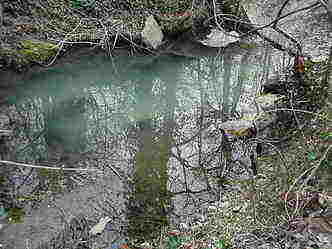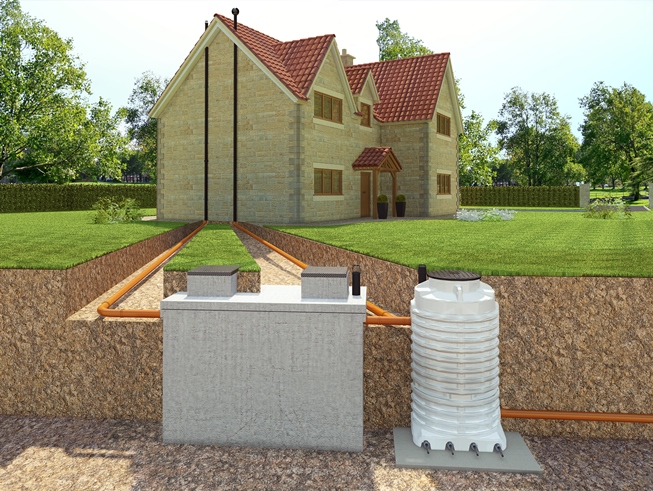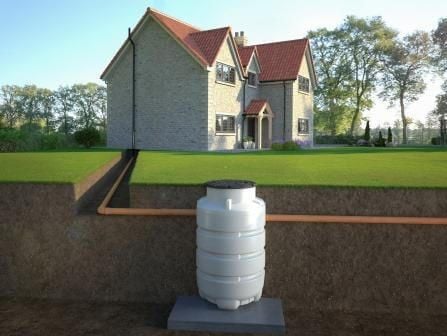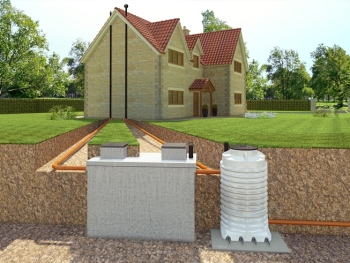Septic Tank Conversion Units
Septic tank conversion units are the answer for failing septic tanks
If you have an existing septic tank which discharges to a ditch or watercourse, it does not comply with the General Binding Rules.

These are your options:
1 Main sewer connection
If you have a main sewer within reach, then you may be able to connect to it. You need to get permission from your Local Water Authority, who may allow you to do so, unless the sewer drain or sewage works that it discharges to are already at full capaclty.
If the levels do not allow a gravity dischage, then you can use a pumping station to lift the septic effluent to reach the main sewer.
2 Installation of a drainage field
If you have a large garden, then you may have room enough to install a drainage field. The soil must be of the correct type and depth and the winter water table must never get to within 2 metres of ground level.
In view of the above, it is not ofter possible, which is why the discharge went to a ditch in the first place.
3 Install a septic tank conversion unit
Treat the efflent coming out of the septic tank to a good enough standard to allow it to be discharged into a ditch or stream. This can be done by adding on a septic tank conversion unit.
We produce 3 types:

4 Replace your septic tank with a sewage treatment plant
Sewage treatment plants treat the sewage to a high enough standard to be able to discharge into a watercourse. This is the best option if your septic tank is old or if you are not certain that it is 100% watertigh

Our septic tank conversion units
All our septic tank conversion units have the required EN-12566-6 Certification to allow them to treat septic tank effluent as well as raw sewage.
There are also 'IN-TANK' conversions which are sold to fit into an existing septic tank to 'convert' it to a sewage treatment plant. These DO NOT have the EN 12566 Certificate and require a Permit from the Environment Agency, prior to installation.
The EN 12566 test runs for 38 weeks at an independent EN Test Centre. It monitors the performance of the plant under a variety of circumstances - normal use, underloading, overloading, etc. This test costs around £30,000 per plant, but you cannot test 'in-tank' systems This is because they are not consistent, i.e. septic tanks are different sizes, different shapes, etc. The 'in-tank' conversion kits that are available are cheaper than the 'add-on' plants but the Environment Agency and Building Regulations do not accept them as a sewage treatment system, without a Permit, which is often withheld.
If the septic tank is integral, i.e. does not leak water in or out, then it is possible to include it as part of a three stage sewage treatment unit by adding a septic tank conversion unit.
The septic tank becomes the primary settlement tank and you add on the missing biozone and final settlement zone in the form of a small conversion unit. This unit is connected to the septic tank's outlet and the effluent that it discharges is clean enough to go directly to a watercourse within the E.A. General Binding Rules. These units are available as gravity discharge or as pumped outlet discharge if you need to discharge uphill from the unit.
There are distinct advantages in placing septic tanks in front of any sewage treatment unit as they intercept all slowly degradable items such as tampons, baby wipes, etc. which can cause problems in some sewage treatment systems.

